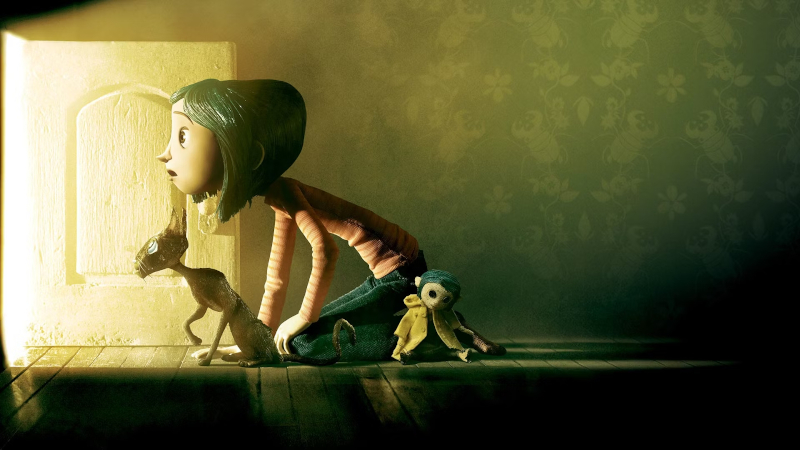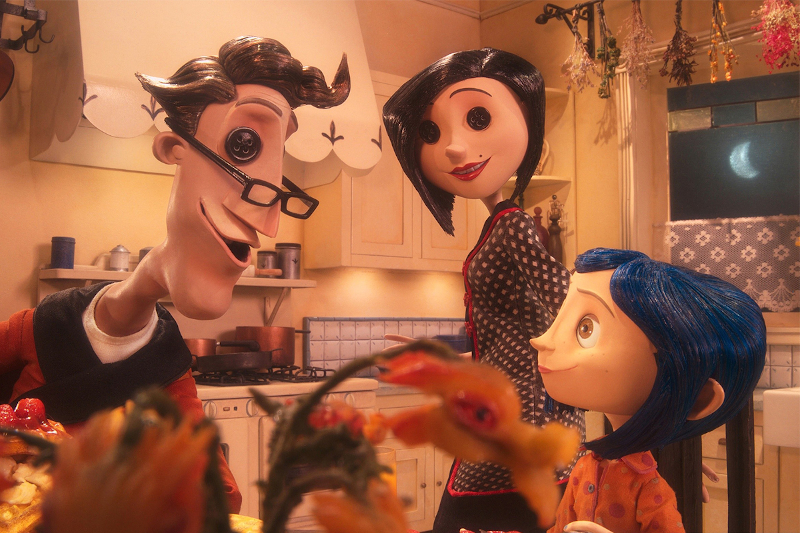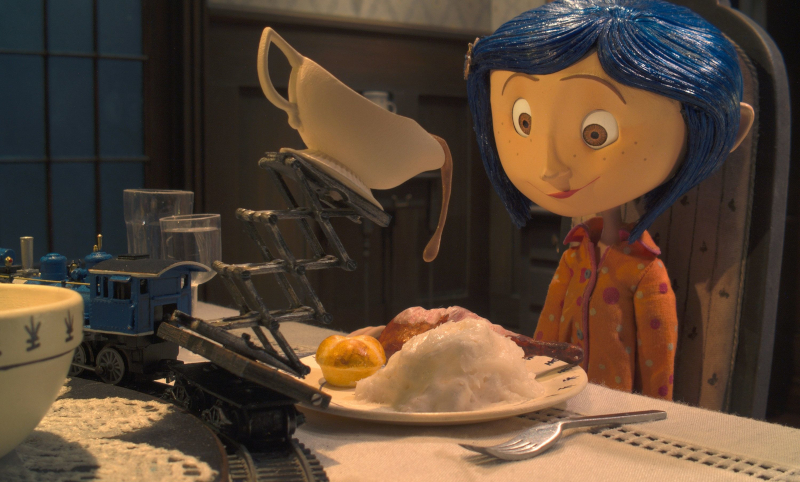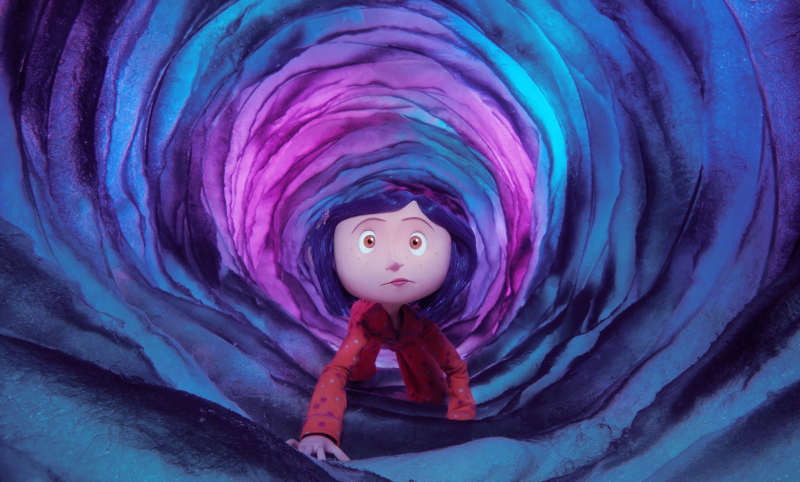Director – Henry Selick – 2009 – US – Cert. PG – 100m
UK release date 08/05/2009
Originally reviewed for Third Way in 2009; republished to coincide with not only the 15th anniversary cinema reissue of the film on Thursday, 15th August 2024, but also the LAIKA: Frame x Frame exhibition which shows at BFI Southbank from Monday, 12th August to Tuesday 1st October 2024 (free to visit, but booking essential – click here) accompanied by a stop-frame animation season including all five LAIKA feature films and much, much more
Selick has successfully positioned himself as Hollywood’s stop-frame puppet animation film-maker (as distinct from plasticine animation film-makers Nick Park and Aardman). His The Nightmare Before Christmas suggested leanings towards horror and the macabre; Coraline goes further in the sense that one’s immediate reaction after viewing was to question whether this was a film suitable for children (on reflection this may be a grown-up reaction and kids may in fact love the film, in much the same way that as a child I enjoyed hiding behind the sofa during the scary bits of Dr. Who.) The source material is an acclaimed children’s book by Neil Gaiman. Anyway, you have been warned.

Only child Coraline’s (voice: Dakota Fanning) family moves into a house in the middle of nowhere: her parents (voices: Teri Hatcher, John Hodgman) are writers busy completing work for an imminent deadline. Fed up with their lack of attention, Coraline explores the house and finds a sub-wallpaper, waist-high door opening on to a bricked up doorway. At night, in her dreams, the door opens into to a passageway which leads to an identical door into an identical room in an identical world – in which her identical parents have time for her. She’s arrived in wonderland – or has she? Because her parents here have buttons sewn over their eyes…

Other characters are doppelgängered too: local boy Wybie Lovat (voice: Robert Bailey, Jr), aged Brit actress duo Spink and Forcible (voices: French & Saunders) and Russian acrobat Mr. Bobinsky (voice: Ian McShane). The cat from our world can speak (voice: Keith David) in this other world. But somehow they – along with Coraline’s father – seem peripheral to our heroine and her centre-stage mother.

The technology – in both animated puppetry and 3D cinematography – is seamless and a joy to watch. The way the various constituent elements come together is remarkable. One sequence, for instance, involves a theatre audience of Scottie dogs watching a circus-style acrobat performance by Spink and Forcible: the sheer scale and sense of detail (not to mention conception and design) are breathtaking.

At its core, the narrative concerns the relationship between dream and waking lives, the safety of the familiar real versus the lure of the unknown other, and the time-worn maxim that the grass may not always be greener on the other side of the fence. The idea of buttons sewn onto eyeballs, of needle piercing corporeality, fits the puppetry medium perfectly. The models distance us from their portrayed reality in a way that a live action interpretation wouldn’t – and such ideas made real with prosthetic effects and flesh (as in many a horror film) would almost certainly earn the piece a much higher rating. While no specific element here merits anything higher than a PG, this is nevertheless one of the creepiest films you’ll ever see, for children or otherwise. In parts, it’s really frightening. Not that there’s anything wrong with that: I’ve already been back for a second viewing.
Coraline is back out in cinemas, including 3D screenings, on Thursday, 15th August 2024. The LAIKA: Frame x Frame exhibition shows at BFI Southbank from Monday, 12th August to Tuesday 1st October 2024 (free to visit, but booking essential – click here) accompanied by a stop-frame animation season including all five LAIKA feature films and much, much more.
Originally reviewed for Third Way in 2009.
Trailer:
